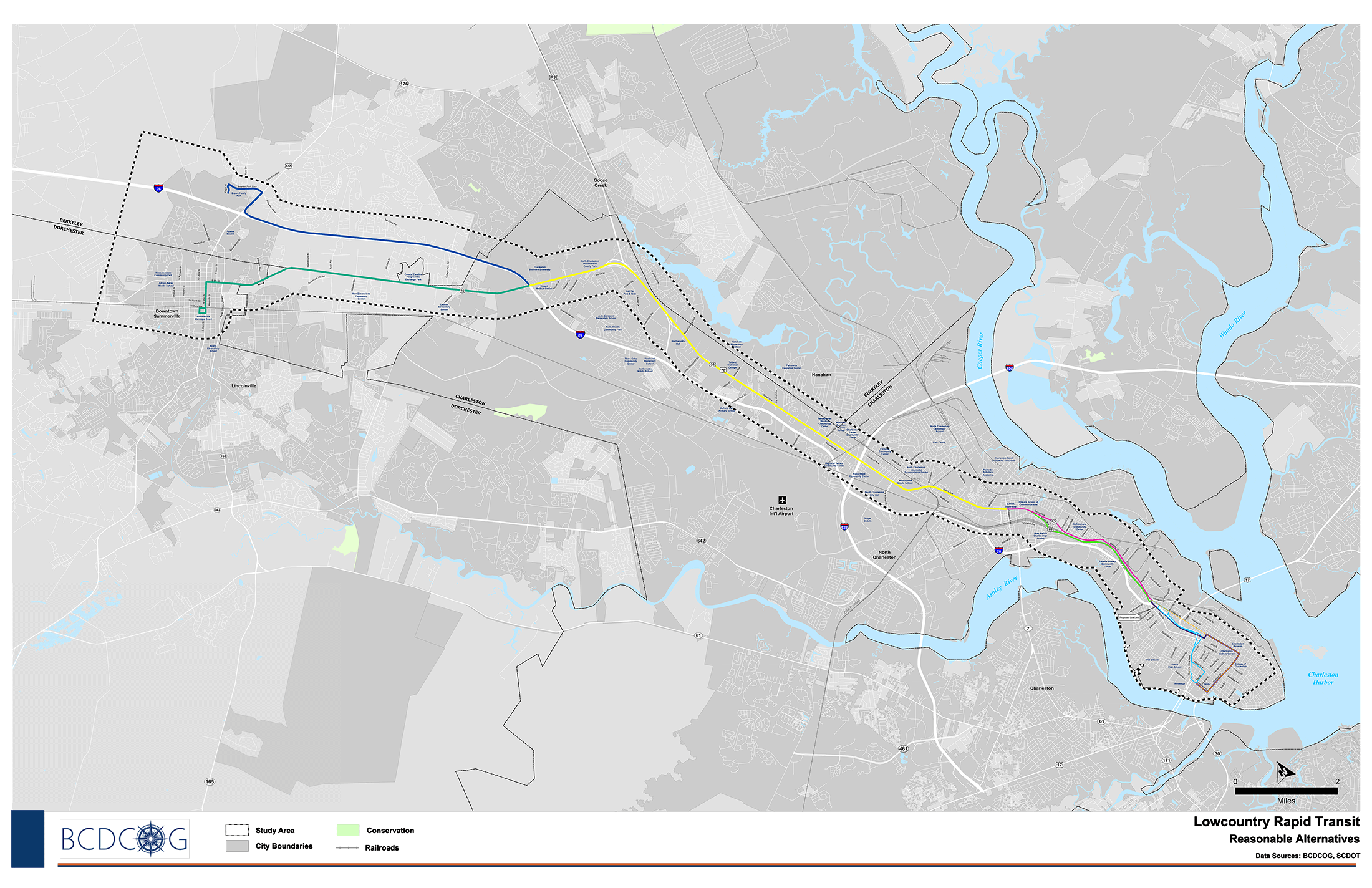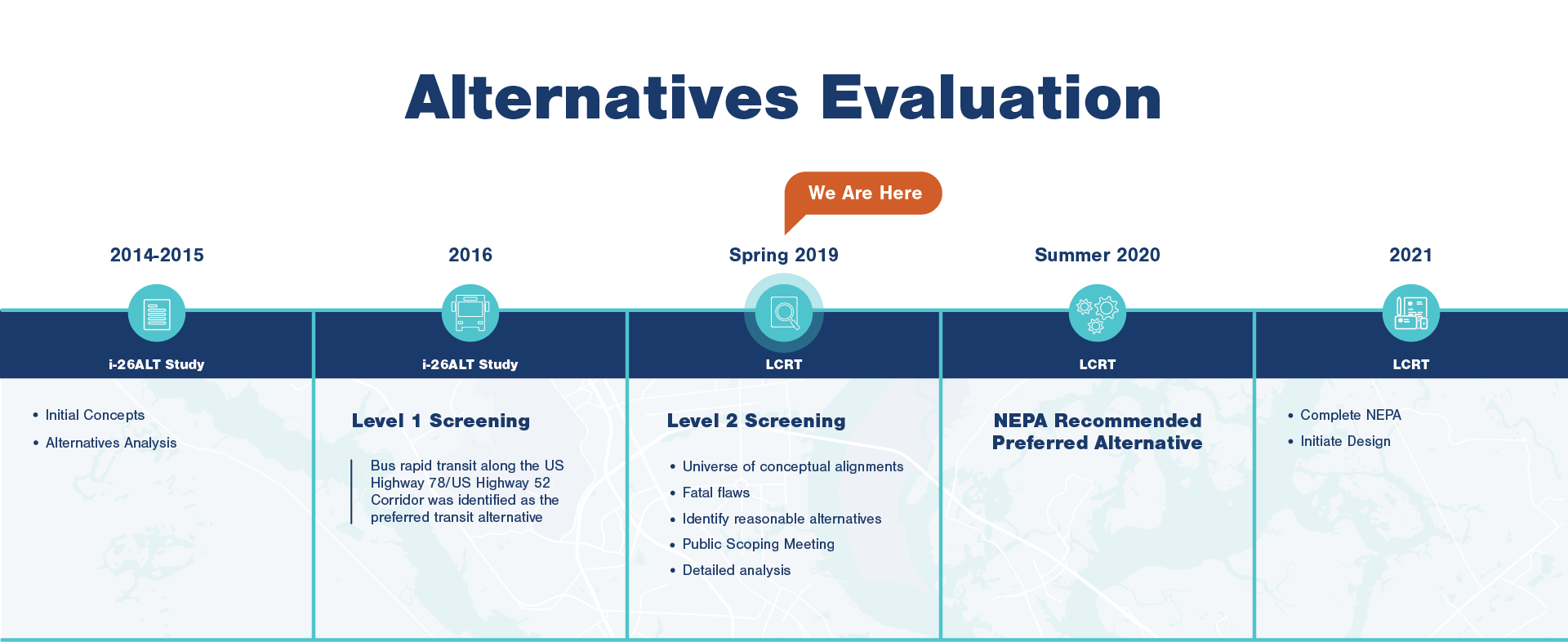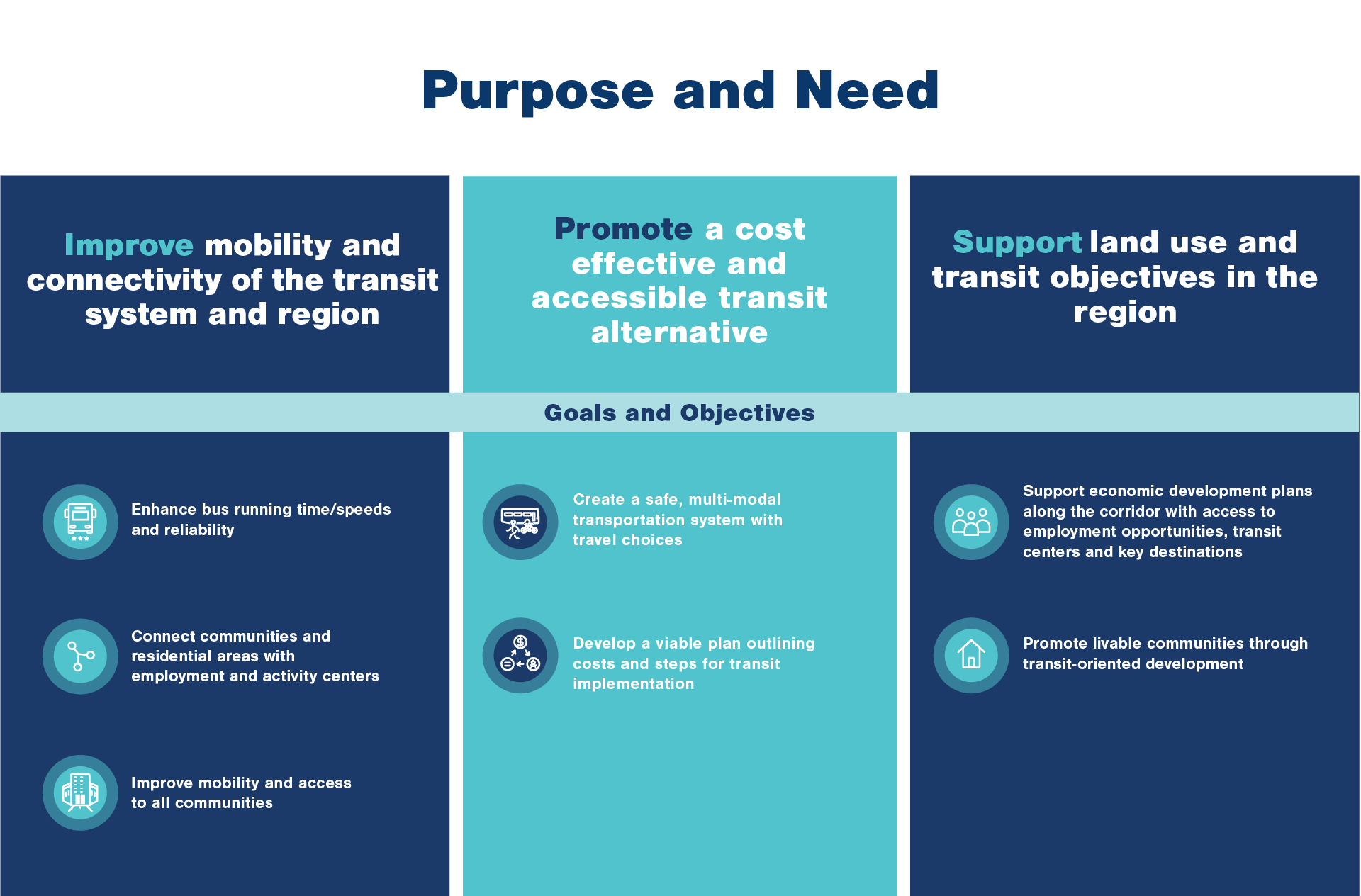
Lowcountry Rapid Transit - NEPA Scoping
Welcome
June 2019 Open House – Online Meeting

Thank you for participating in this online meeting. Since the last public meetings in January 2019, the Berkeley-Charleston-Dorchester Council of Governments has diligently worked to move the project into its next phase of development. We have completed a review of existing conditions, initiated environmental data collection, developed the draft Purpose and Need for the project, started evaluating route alternatives, and advanced branding of the service and architectural design of stations.
To navigate the online meeting:
- Click on the arrows on the right side of your screen.
- Use the navigation bar at the left of your screen to revisit any part of the meeting.
The entire session should take no more than 15 minutes to complete.
Thank you for your participation.
Get up to Speed on LCRT
Are you up to speed on LCRT?
Check out how we got to this point in the project:
Reasonable Alternatives
Explore the Reasonable Alternatives
Hover over the map to zoom in or download a PDF version. Download (1.9MB)
NEPA Purpose & Need
What is the Purpose and Need?
Click on the images to enlarge.

The NEPA review process will guide the design of the project alternatives.

Taking into consideration the existing conditions in the corridor, the project team has developed a purpose and need, which defines what this project will accomplish.
Cross Sections and Design Considerations
Conceptual Cross Sections
Lowcountry Rapid Transit design will focus on moving people in cars, on the bus, on bikes and by foot.
Here are three conceptual examples of how the roadway could be designed. Click on the images to enlarge.

Example 1
- Center running bus rapid transit
- Multi-use path or sidewalk on either side

Example 2
- Center running bus rapid transit
- Sidewalk on both sides

Example 3
- Side running bus rapid transit
- Sidewalk on both sides
Design Process
The Design Process
In January 2019, we held visioning workshops with members of the community in Charleston, North Charleston and Summerville to learn what makes our communities special and how the proposed bus rapid transit system can celebrate our unique characters, histories, and values. How do we use this information to inform station design and branding the system?
Based on the input provided at the community workshops we started the process to develop concepts for station architecture and the system branding.
Three themes emerged:
- Nature
- Culture
- Lifestyle
Architecture & Station Design
Carrying the public’s vision into station design, throughout the corridor and into physical structures will deliver the overall rider experience. A well-designed system fits within the context of the communities that it serves, and has a predictable and consistent design. Now is your chance to explore themes, design principles and station amenities.
Next Steps
We will evaluate the reasonable alternatives based on their ability to:
- Improve local and regional mobility
- Support economic development plans along the corridor
- Promote livable, transit oriented development
- Create a multimodal transportation system with travel choices
- Preserve a healthy environment
- Meet cost and logistics considerations
- Qualify for FTA funding grants
Public Meetings – January 2020

